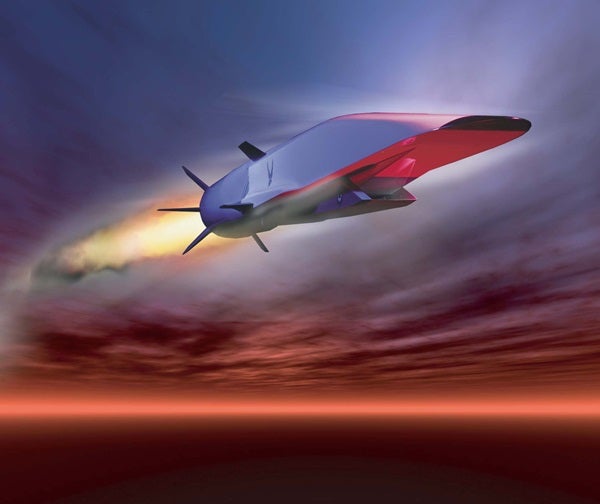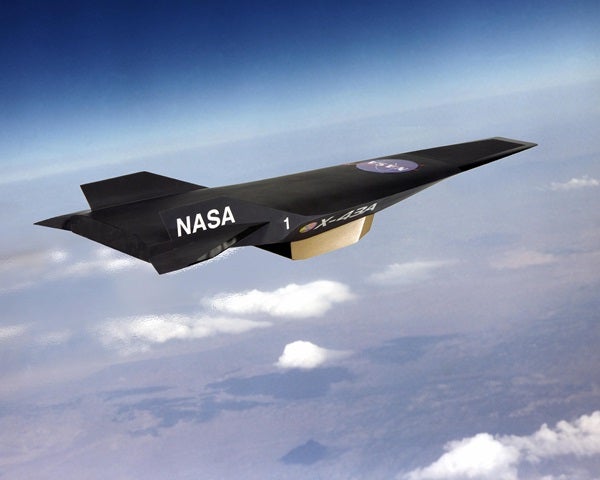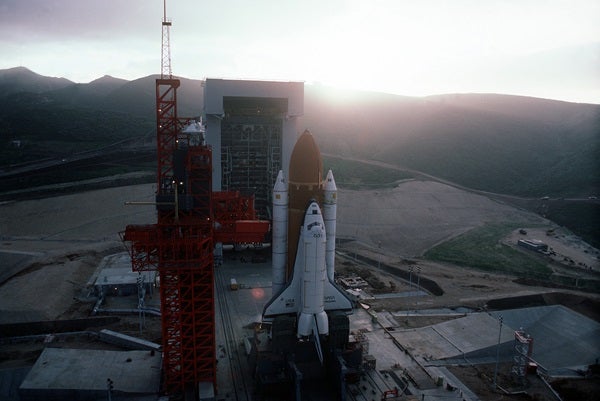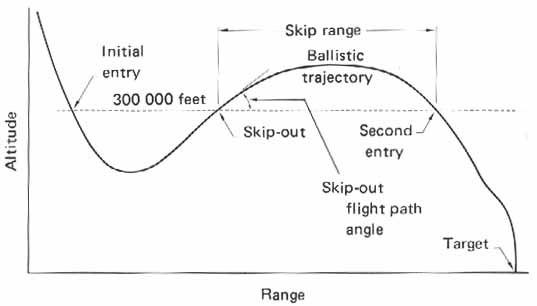Last month, the global security community was startled by a report that China had twice tested hypersonic weapons over the summer. According to reporting by the Financial Times, this weapons system consists of two parts: a fractional orbital bombardment system (FOBS) and a hypersonic glide vehicle (HGV).
Neither FOBSs nor HGVs are new — but the combination of the two is. Many in the defense community have likened the Chinese hypersonic missile tests to the 1957 launch of Sputnik, a moment when the USSR displayed a technological superiority that stunned the U.S.
“What we saw was a very significant event of a test of a hypersonic weapon system. And it is very concerning,” said Gen. Mark Milley, chairman of the Joint Chiefs of Staff, in an interview with Bloomberg Television. “I don’t know if it’s quite a Sputnik moment, but I think it’s very close to that. It has all of our attention.”
The report fueled concerns about the accelerating hypersonic weapons arms race between the U.S., China, and Russia. But it also highlights the ongoing — and at times, uneasy — relationship between military systems and spaceflight.
What is a fractional orbital bombardment system?
FOBS is the highest-velocity missile deployment system that currently exists.
Broadly speaking, the slowest missiles are cruise missiles, which are essentially drone planes. Though they may initially ride a rocket booster launched from the ground or a submarine, they go on to cruise through the atmosphere like a jet-powered plane.
Ballistic missiles, meanwhile, are essentially suborbital rockets, operating on the principle that what goes up must come down. When launched, they can climb to altitudes up to 1,200 miles (2,000 kilometers) — much higher than satellites or space stations in low Earth orbit. They can also reach speeds of up to several miles per second before reentering the atmosphere. However, their ballistic nature also makes their trajectories predictable, and therefore vulnerable to missile defense systems.
In contrast, in a fractional orbital bombardment system, the rocket achieves low Earth orbit, which requires more energy than a ballistic missile has. But before completing one full orbit, a FOBS rocket deorbits by turning around and performing a retrograde engine burn. This allows it to slow down so that its trajectory intersects with its target on the ground.
The FOBS concept was originally developed by the Soviet Union, in part to bypass international agreements that prevent weapons of mass destruction from being stationed in Earth orbit. A fractional orbital bombardment system, Moscow asserted, was not prohibited by those agreements.
Being able to strike from low Earth orbit carries several advantages. By staying relatively low, never climbing above 150 miles (240 km) or so, they remain below the line-of-sight of radar designed to pick up arcing ballistic missiles. Orbital trajectories also allow militaries to strike from unexpected directions. For example, the Soviet Union’s FOBS gave missiles the ability to evade potential U.S. anti-ballistic missile systems in Alaska. How? By launching to an orbit that flies over the South Pole, blindsiding the U.S from below.
The Soviet Union’s FOBS was short-lived, however. After being deployed in 1969, it was explicitly banned in the 1979 SALT II treaty, which both nations abided by (though the U.S. Senate never ratified it). By that point, though, the USSR’s submarine-launched ballistic missiles could fill the role of FOBS.
Over time, the Soviet Union’s need for FOBS waned, particularly because the U.S. had never deployed the extensive anti-ballistic missile systems that Moscow had anticipated. Also, improvements in U.S. radar technology meant FOBS launches would no longer go entirely undetected (though tracking them still remains a challenge). To top it off, the USSR’s FOBS was never very accurate, with an average error of over 3 miles (5 km).
So what’s changed, and why is China interested in FOBS?
First, the U.S. seriously invested in missile defense systems after pulling out of the 1972 Anti-Ballistic Missile Treaty in 2002. In announcing the move Dec. 13, 2001, then-president George W. Bush said that the 9/11 attacks, barely two months prior, had demonstrated the U.S.’ need to protect itself against “future terrorist or rogue-state missile attacks.” The resulting array of missile defense systems include the Ground-Based Midcourse Defense system, deployed in Alaska and California to stop ballistic missiles coming over the North Pole.
Second, China’s pairing of a hypersonic glide vehicle with a FOBS to deliver the warhead represents a serious upgrade to FOBS, potentially improving its accuracy — and unpredictability.
What is a hypersonic glide vehicle, and how does it compare to spacecraft?
The term “hypersonic” means flight at a speed faster than five times the speed of sound, or Mach 5 (3,800 mph or 6,100 km/h). In the hypersonic regime of flight, a new set of engineering considerations emerge that supersonic craft don’t need to deal with. These include frictional heating and managing the shock waves produced by the craft. And for hypersonic vehicles, shockwaves occur much closer to the craft than they do for supersonic systems.
Various types of craft can operate in the hypersonic regime — for example, a hypersonic cruise missile uses a ramjet to soar through the upper atmosphere. But hypersonic glide vehicles ride to orbit on conventional boosters, then deorbit and glide through the atmosphere to reach their targets.
In essence, HGVs are spacecraft. They are incredibly similar to rocket-launched spaceplanes like the Air Force’s X-37B, which launches to orbit, reenters the atmosphere, and glides to make a precise landing on a runway. China also tested a similar orbital spaceplane for the first time in September 2020. “[This] is the same concept, except you put a nuclear weapon on the glider and don’t bother with a landing gear,” tweeted arms control expert Jeffrey Lewis.
Most hypersonic glide vehicles have been designed with a ballistic missile for a first stage, such as the Chinese Dongfeng-17 and the Russian Avangard. China’s recent tests, however, appear to be the first to deliver an HGV with a FOBS booster.
An HGV’s ability to maneuver as it descends into thicker and thicker air allows it to be both more accurate and unpredictable. When the vehicle’s wings begin generating lift as it reaches the upper wisps of the atmosphere, it gains the ability to roll and maneuver. This means it can alter its trajectory to take aim at a different target than its orbit suggested, or to evade an anti-ballistic missile.
The space shuttle was designed with similar cross range capability in mind, though for a different reason. The U.S. Air Force wanted to be able to launch a shuttle from Vandenberg Air Force Base to an orbit over the North Pole. There, it could deploy or retrieve a satellite over the Soviet Union — or even capture a Soviet satellite — before returning to Vandenberg after a single orbit. Over the duration of flight time, the Earth‘s rotation would have carried the base roughly 1,100 miles (1,800 kilometers) eastward. As the Air Force’s political support was crucial to Congressional approval of the Space Shuttle Program, NASA designed the orbiter to be able to divert its trajectory after entering the atmosphere by at least that much. This was a major consideration in the eventual delta-wing design, which generates more lift than straight wings at hypersonic speeds. (The Air Force dropped its plan to use the shuttle as its workhorse launch system after the Challenger disaster.)
An HGV could also use its maneuverability to extend its range: By pulling up on reentry, it can re-exit the atmosphere in a ballistic trajectory, skipping above the atmosphere and making a second reentry thousands of miles away.
Such skip reentry trajectories have been considered since the earliest serious spacecraft designs — even for capsules and spacecraft without wings or aerodynamic control surfaces. A capsule produces some lift and affords some maneuverability. By spreading the deceleration and heating loads across two reentry events, it also makes the reentry safer, which is particularly useful for lunar missions. They were used as early as the USSR’s robotic lunar Zond missions in the late 60s and early 70s. China’s Chang’e 5 mission also used a skip reentry, as will NASA’s Orion capsule, which will carry astronauts to the Moon and back as part of the Artemis program. (A skip reentry had been considered for the Apollo missions, but it was ultimately not implemented in the craft’s software due to a lack of computing power.)
Of course, the exchange of technology between spacecraft and weapons goes the other way, too — especially in the early years of spaceflight, when both Russian and U.S. boosters were modified intercontinental ballistic missiles.
That overlap between spacecraft and weapons systems was highlighted by China’s response to the Financial Times’ report: It claimed that it had tested a spaceplane, not a weapons system.













